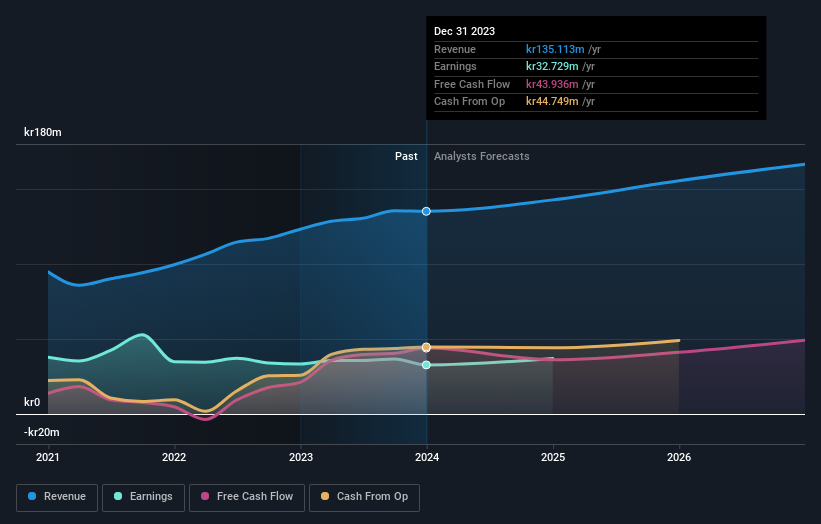- Norway
- /
- Healthtech
- /
- OB:CONTX
ContextVision AB (publ) Earnings Missed Analyst Estimates: Here's What Analysts Are Forecasting Now
It's been a mediocre week for ContextVision AB (publ) (OB:CONTX) shareholders, with the stock dropping 17% to kr7.50 in the week since its latest annual results. It was not a great result overall. While revenues of kr135m were in line with analyst predictions, earnings were less than expected, missing statutory estimates by 16% to hit kr0.42 per share. Earnings are an important time for investors, as they can track a company's performance, look at what the analyst is forecasting for next year, and see if there's been a change in sentiment towards the company. We thought readers would find it interesting to see the analyst latest (statutory) post-earnings forecasts for next year.
View our latest analysis for ContextVision

Following the latest results, ContextVision's single analyst are now forecasting revenues of kr142.8m in 2024. This would be a modest 5.7% improvement in revenue compared to the last 12 months. Statutory earnings per share are predicted to ascend 13% to kr0.48. In the lead-up to this report, the analyst had been modelling revenues of kr142.2m and earnings per share (EPS) of kr0.48 in 2024. So it's pretty clear that, although the analyst has updated their estimates, there's been no major change in expectations for the business following the latest results.
There were no changes to revenue or earnings estimates or the price target of kr10.00, suggesting that the company has met expectations in its recent result.
Looking at the bigger picture now, one of the ways we can make sense of these forecasts is to see how they measure up against both past performance and industry growth estimates. We would highlight that ContextVision's revenue growth is expected to slow, with the forecast 5.7% annualised growth rate until the end of 2024 being well below the historical 8.2% p.a. growth over the last five years. Compare this against other companies (with analyst forecasts) in the industry, which are in aggregate expected to see revenue growth of 9.1% annually. So it's pretty clear that, while revenue growth is expected to slow down, the wider industry is also expected to grow faster than ContextVision.
The Bottom Line
The most important thing to take away is that there's been no major change in sentiment, with the analyst reconfirming that the business is performing in line with their previous earnings per share estimates. On the plus side, there were no major changes to revenue estimates; although forecasts imply they will perform worse than the wider industry. The consensus price target held steady at kr10.00, with the latest estimates not enough to have an impact on their price target.
Keeping that in mind, we still think that the longer term trajectory of the business is much more important for investors to consider. At least one analyst has provided forecasts out to 2026, which can be seen for free on our platform here.
It is also worth noting that we have found 2 warning signs for ContextVision that you need to take into consideration.
New: AI Stock Screener & Alerts
Our new AI Stock Screener scans the market every day to uncover opportunities.
• Dividend Powerhouses (3%+ Yield)
• Undervalued Small Caps with Insider Buying
• High growth Tech and AI Companies
Or build your own from over 50 metrics.
Have feedback on this article? Concerned about the content? Get in touch with us directly. Alternatively, email editorial-team (at) simplywallst.com.
This article by Simply Wall St is general in nature. We provide commentary based on historical data and analyst forecasts only using an unbiased methodology and our articles are not intended to be financial advice. It does not constitute a recommendation to buy or sell any stock, and does not take account of your objectives, or your financial situation. We aim to bring you long-term focused analysis driven by fundamental data. Note that our analysis may not factor in the latest price-sensitive company announcements or qualitative material. Simply Wall St has no position in any stocks mentioned.
About OB:CONTX
ContextVision
A software company, provides image analysis and imaging for medical systems in South Korea, China, Japan, the United States, and internationally.
Flawless balance sheet with high growth potential.
Market Insights
Community Narratives



